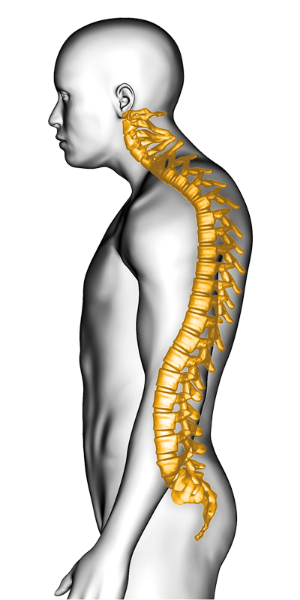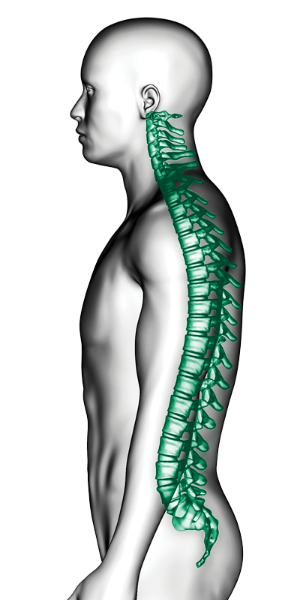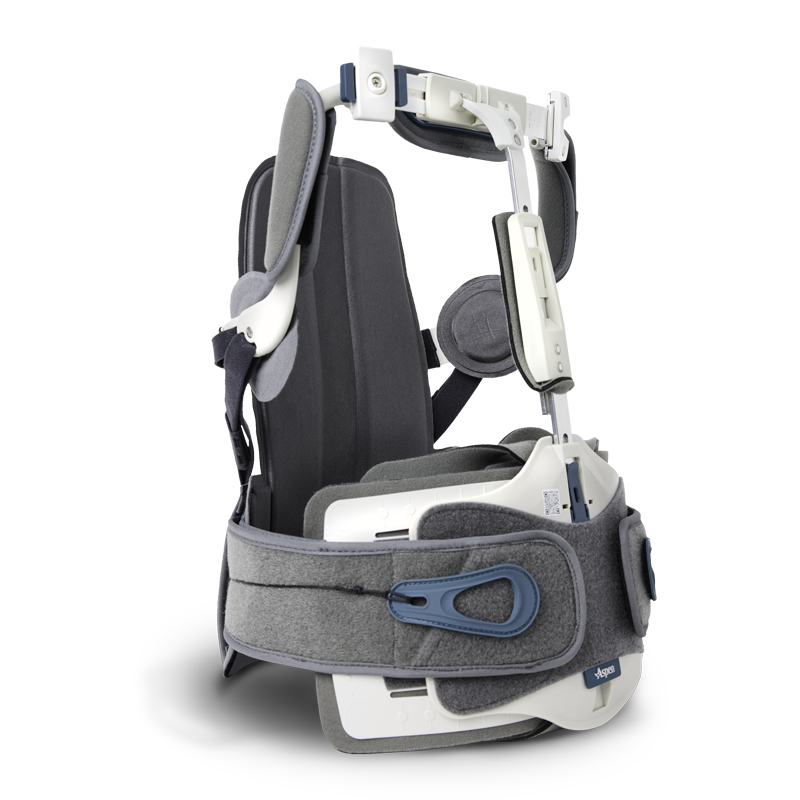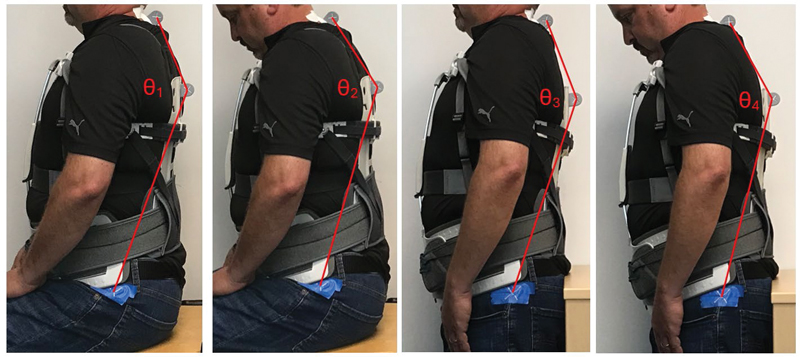About the Align Orthosis
Breaking the PJK Cycle: Outcomes of Post-Surgical Bracing in Deformity Correction

Potential patient outcome without brace. Post-surgical development of PJK.

Potential patient outcome with brace. No PJK, appropriate spinal alignment.
(PJK) is the leading complication of adult spinal deformity surgery, occurring in approximately up to 30 percent of patients. This complication can result in pain, neurological complications, functional impairment, and can require additional revision surgeries. The absence of a singular solution for surgeons to mitigate the incidence of PJK necessitates a multifaceted strategy.
Developed with leading spine surgeons, the Align PJK Orthosis is a prefabricated TLSO that provides optimal flexion control and circumferential stabilization to reduce readmittance rates, create an optimal environment for healing, and improve patient outcomes.
Contact with key points at the chest, waist, and posterior panels ensures control of flexion.
Helps restore symmetrical spinal loads and improves biomechanics to help patients move safely after surgery.
Pulley system provides mechanical advantage to the patient for ease of tightening post-operatively for a comfortable fit.

" When used post-operatively, the Align Orthosis is a non-invasive addition to existing PJK mitigation strategies, so we truly have a multifactorial approach to prevention.

Han Jo Kim, MD
Spine Surgeon,
Hospital for Special Surgery
The data demonstrate that patients who underwent hyperextension bracing for 6 weeks after corrective surgery for adult spinal deformity had a statistically significant smaller change in proximal junctional angle at 1 year post-operatively. Additionally, patients who were braced had a lower incidence of proximal junctional kyphosis at 1 year post-operatively.
Post-Operative Hyperextension Bracing Has the Potential to Reduce Proximal Junctional Kyphosis: A Propensity Matched Analysis of Braced versus Non-braced Cohorts

Our data suggest that the new Align PJK Orthosis provides better sagittal motion restriction than a Jewett-style Hyperextension TLSO in the sitting and standing positions. The data also suggest that the new Align PJK Orthosis provides equal sagittal motion restriction compared to a Jewett-style Hyperextension TLSO when moving from sitting to standing.
Comparative Evalutation of Spinal Orthoses in Flexion Motion: A comparison of the SierraTM Hyperextension TLSO and the Align Orthosis

1. Shahi, P., Merrill, R. K., Pajak, A., Samuel, J. T., Akosman, I., Clohisy, J. C., Du, J., Zhang,B., Elysee, J., Kim, D. N., Jordan, Y., Knopp, R. L., Lovecchio, F. C., & Kim, H. J. (2024).Post-operative hyperextension bracing has the potential to reduce proximal junctionalkyphosis: A propensity matched analysis of braced versus non-braced cohorts. GlobalSpine Journal. https://doi.org/10.1177/21925682241260278
2. Aspen Medical Products. (2024). Comparative evaluation of spinal orthoses in flexionmotion: A comparison of the Sierra Hyperextension TLSO and the Align Orthosis (Technical Report).